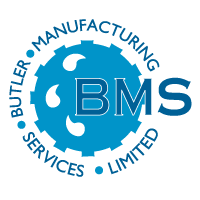What is the difference between COD and BOD in Sewage Treatment?
Customer Question:
What is the difference between COD and BOD in sewage treatment, and do I need to test both?
Explanation of COD and BOD:
Measures the oxygen required to chemically oxidise organic matter in a sewage sample using a strong oxidising agent, such as Potassium Dichromate.
Includes organic compounds that are toxic to biological life.
Results are typically higher than BOD because more organic matter can be chemically oxidised than biologically.
BOD (Biochemical Oxygen Demand):
Measures the level of organic matter that can be biologically oxidised by microorganisms.
Indicates the oxygen demand due to biological activity in the sewage sample.
Why COD and BOD Are Important:
Both tests indicate the potential oxygen-stripping capacity of effluent when discharged into receiving waters.
Higher values of COD or BOD signify a greater risk of oxygen depletion, potentially harming aquatic life.
Key Differences:
| Parameter | COD | BOD |
|---|---|---|
| Purpose | Chemical oxidation of organic matter | Biological oxidation of organic matter |
| Time Required | ~3 hours | 5 days |
| Sensitivity to Toxics | Captures toxic organic compounds | Does not capture toxic organic compounds |
| Application | Industrial sewage or toxic substances | Domestic effluent and general sewage |
Do You Need Both Tests?
For domestic effluent (e.g., BOD & Suspended Solids of ~300 mg/l), COD is often not required unless specified in the discharge licence.
COD is particularly useful in industrial sewage treatment where toxic substances are present.
Advantages of COD Testing:
Faster results (~3 hours compared to 5 days for BOD).
Over time, a BOD ratio can be established, allowing for extrapolation of BOD from COD values.
For further details, explore the Chemical Oxygen Demand Link for additional resources.
About BMS
BMS is a quality manufacturer of package products for wastewater and stormwater treatment:
Established: 1986
Global Reach: Exported to over 50 countries.
Family Business: A third-generation company with deep expertise.
BMS Product Range
BMS provides a wide array of surface water and wastewater treatment products, including:
View the full product catalogue here
Additional Services by BMS
Free Design Service: For sewage treatment, pump stations, and surface water management.
Operation and Maintenance: Full services for existing installations, including repair, advice, and testing.
Free CPD Presentations: Available for sewage treatment and surface water management, delivered at your location.
We would be delighted to discuss any requirements you might have, and we are available to meet you at your convenience. Contact us today.
© Butler Manufacturing Services 2024.
